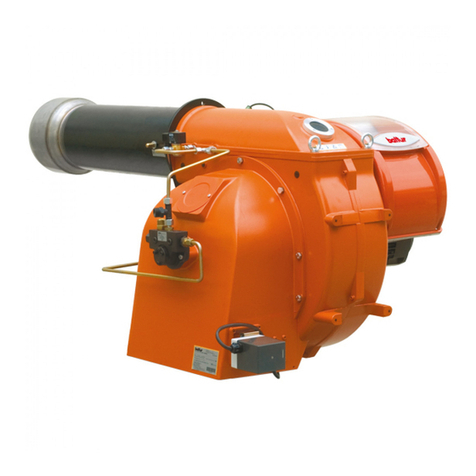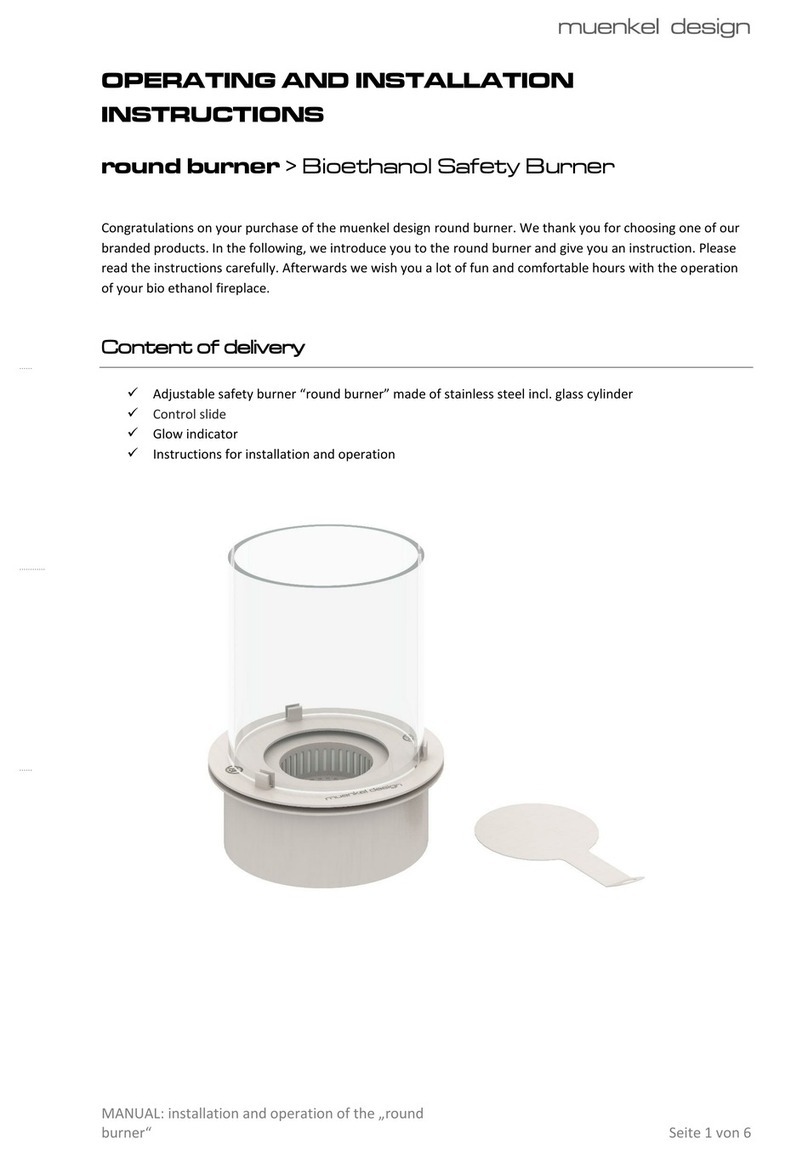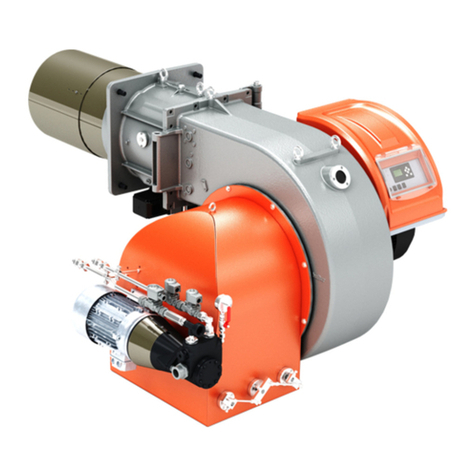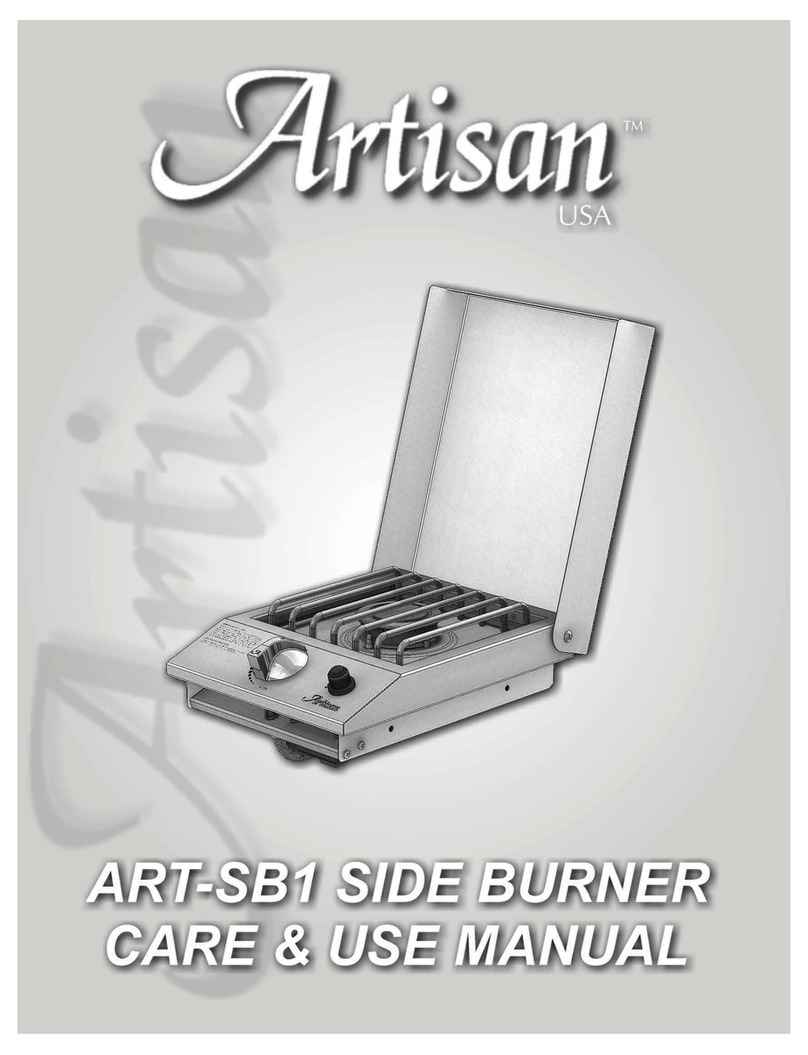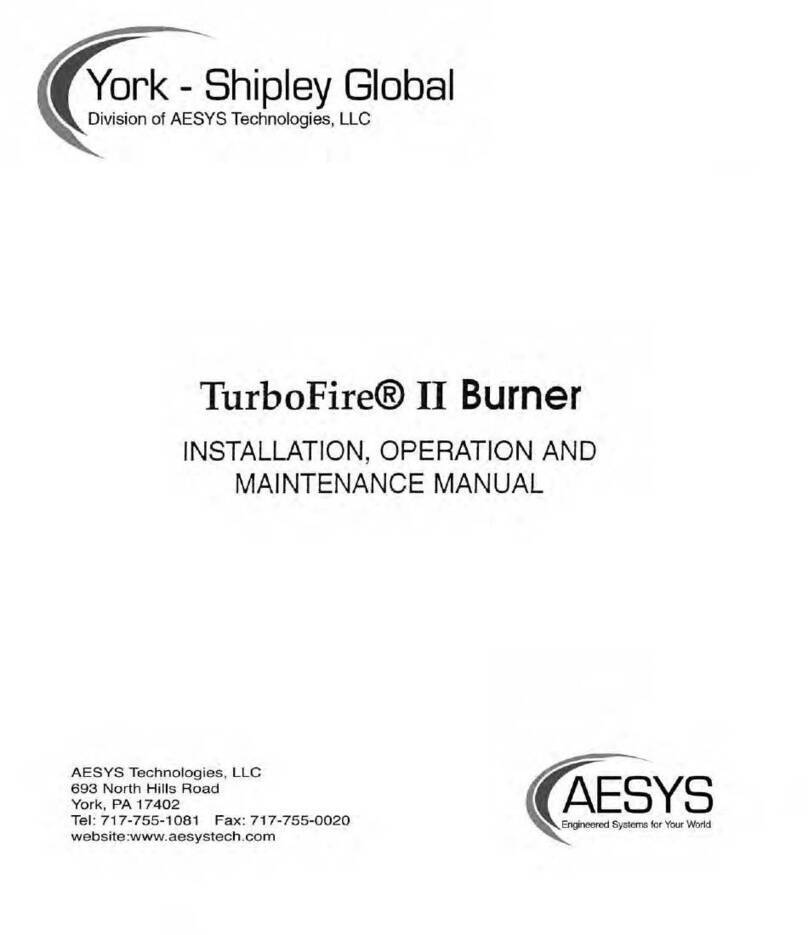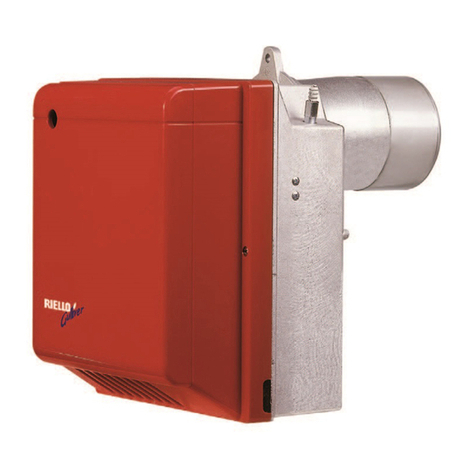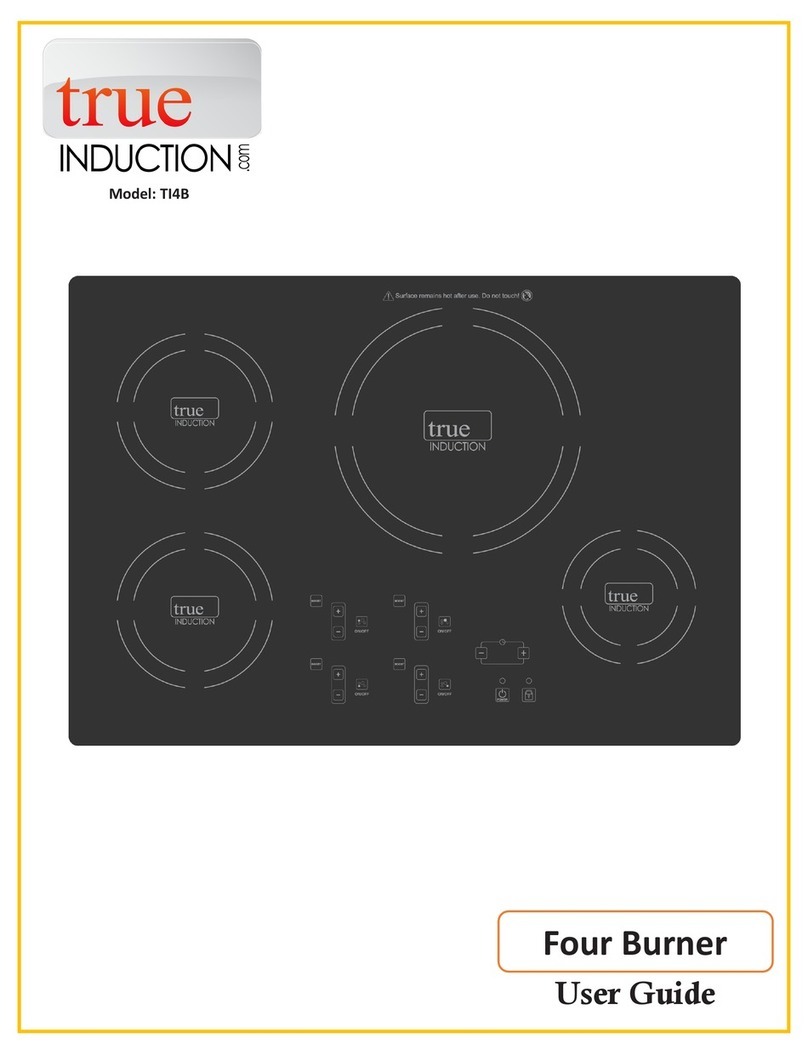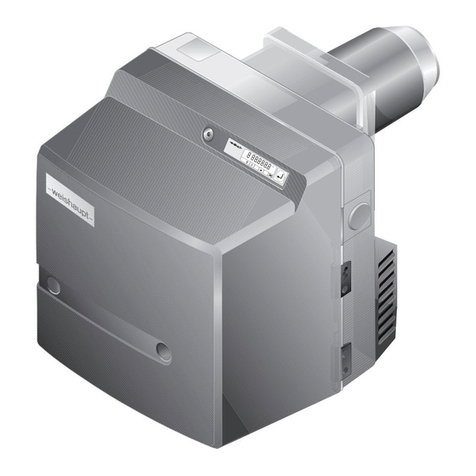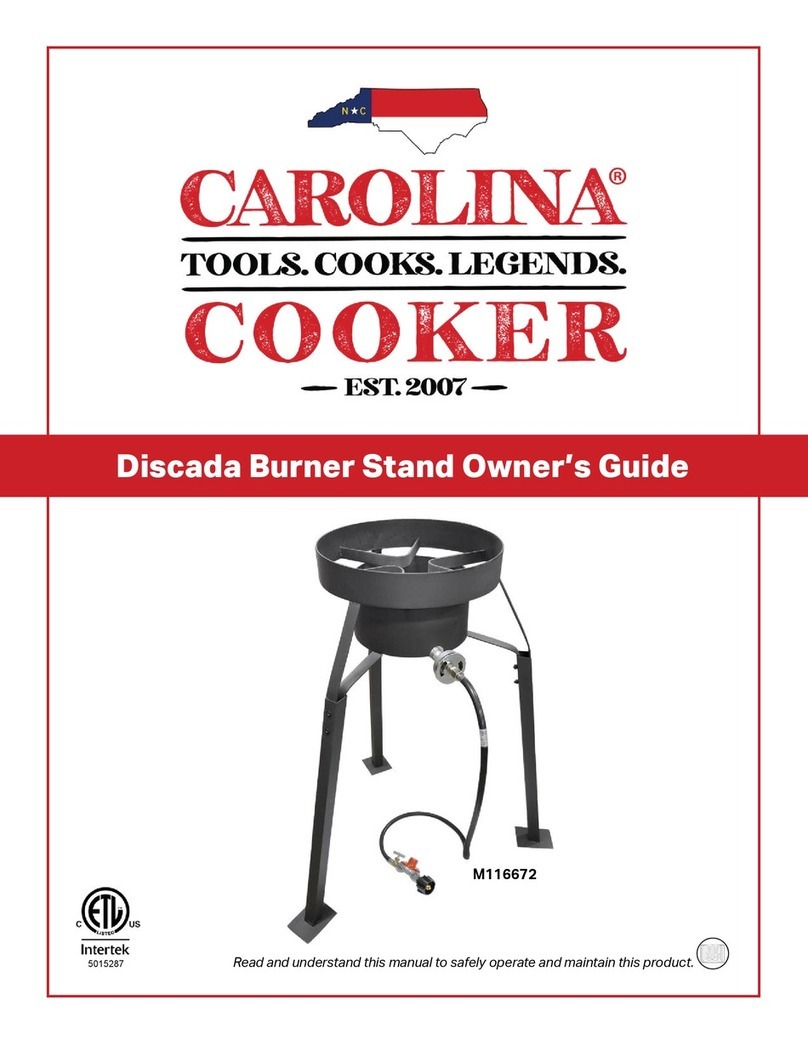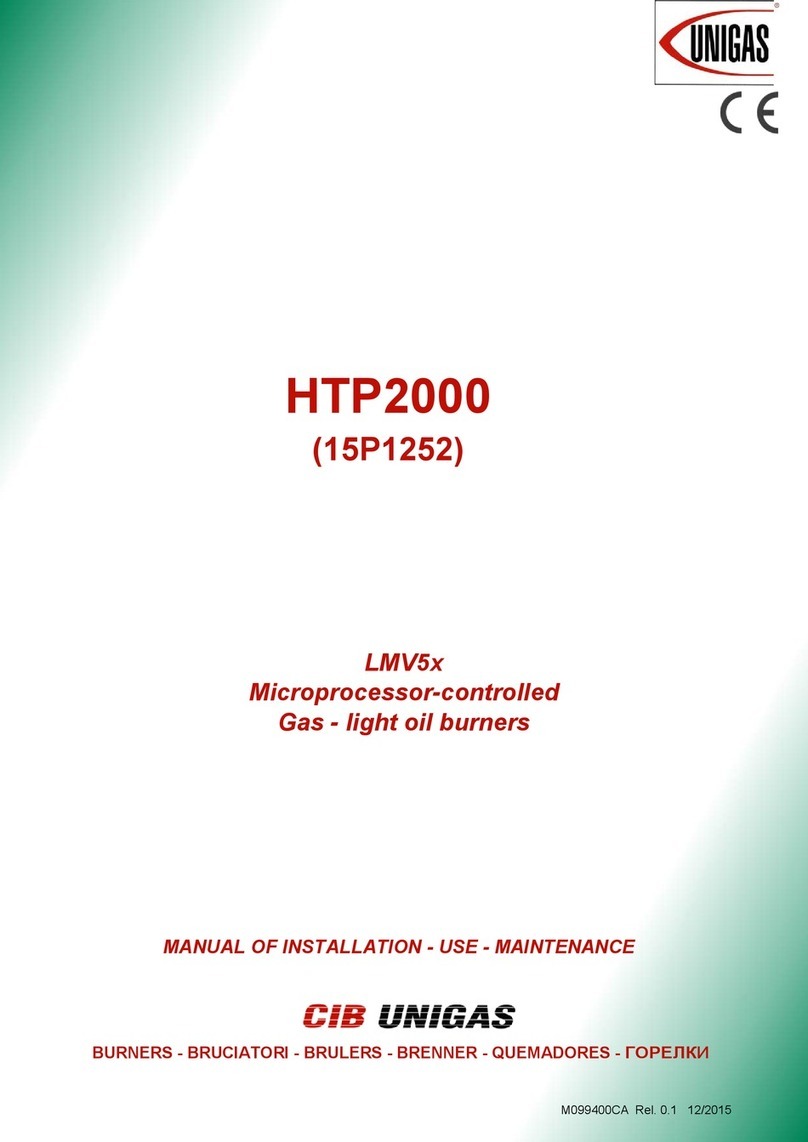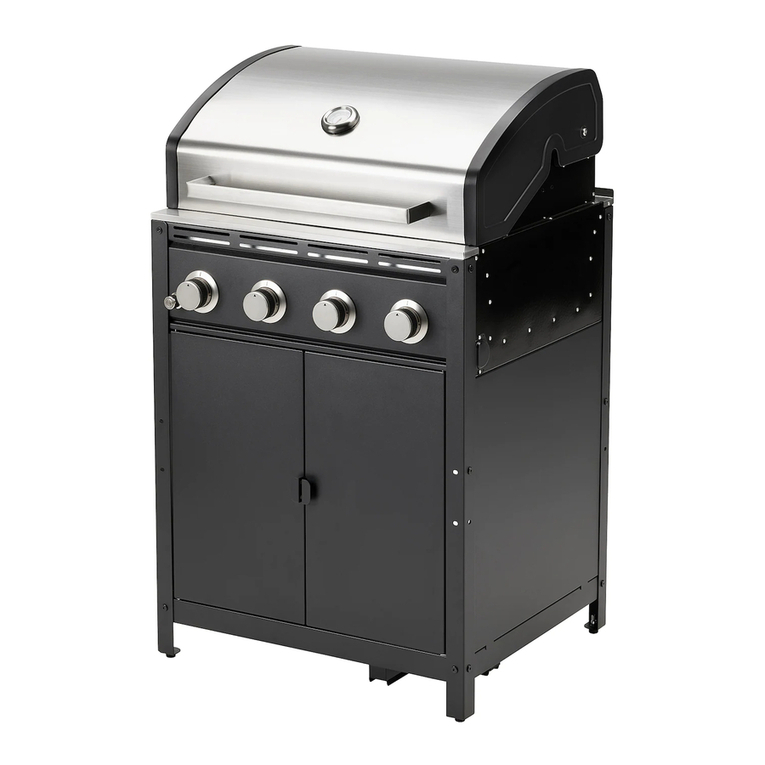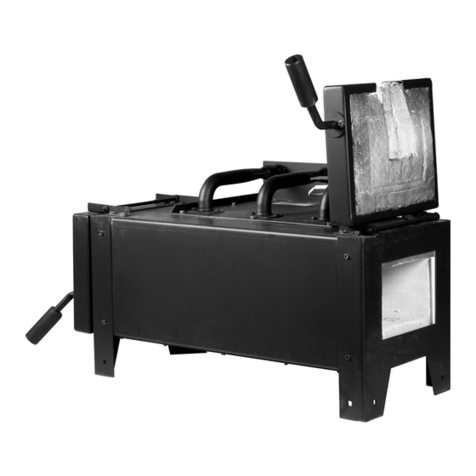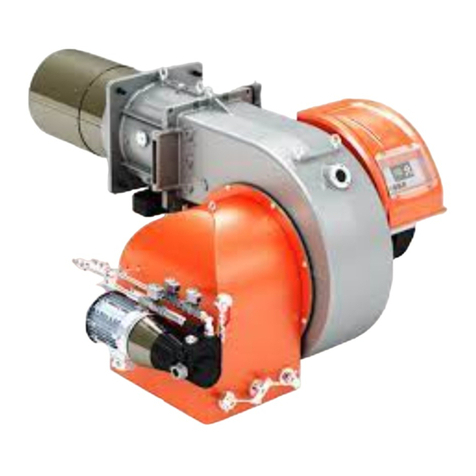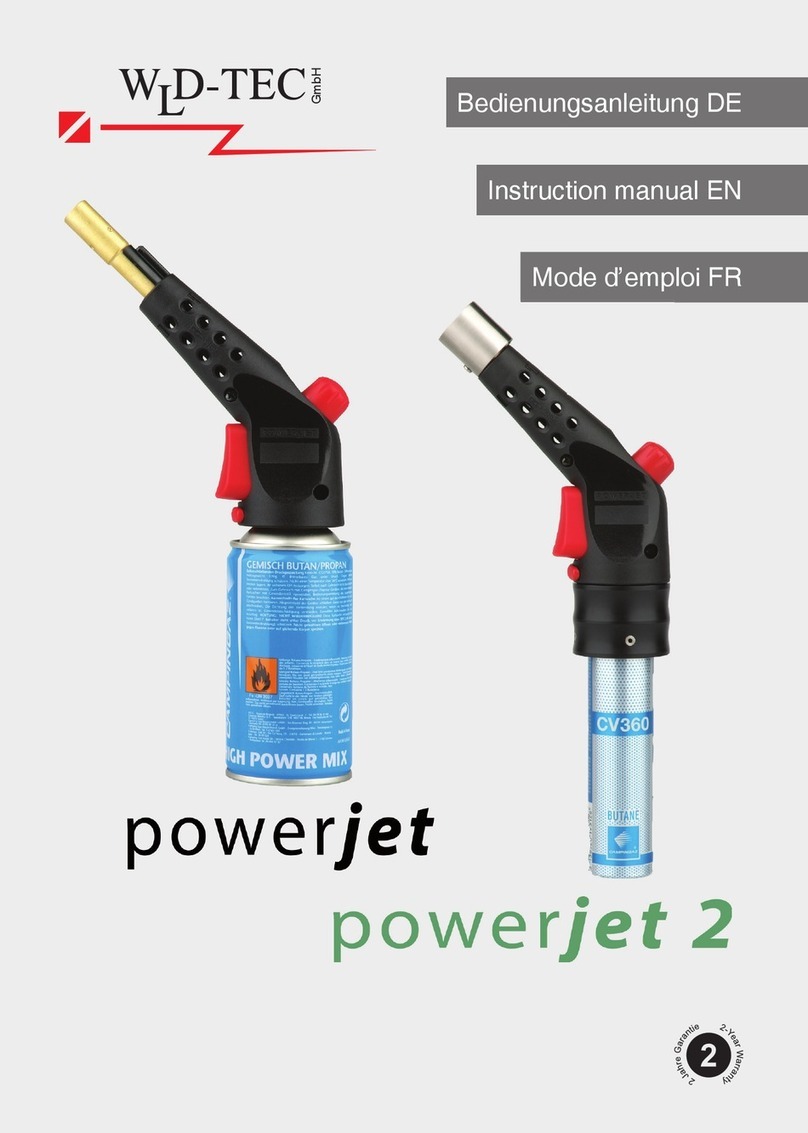
7NIBE PB 10
Installation
Commissioning and adjusting
Commissioning and adjusting
Feeding pellets
Start the pellet screw by inserting the plug in a wall socket.
It takes about 10-20 minutes before the pipe is filled to
the brim. This time applies for 1.5 meter screws and for an
angle of about 45°. Once the pellets have reached the brim
of the screw, allow it to run for about 2 minutes to fill the
pipe and for even feeding.
(Allow the pellets to drop into a bucket for easy return to
the store). Then transfer the plug to the burner's socket
and install the hose between the screw pipe and the pellet
burner.
Normal start (for factory settings)
1. Switch on the boiler's power switch and turn the boil-
er's thermostat to the desired temperature.
2. The thermostat requests heat.
3. The fan starts and vents the boiler and chimney for 15
seconds.
4. The fan slows to 1500 rpm, start dose supplies the
burner for 75 seconds.
5. The fan continues at 1500 rpm, until the photocell reg-
isters fire in the burner.
6. When the photocell has registered fire in the burner,
ignition is delayed for 15 seconds and the first batch of
pellets are fed in at 25 % of the set value on P2.
7. Overrun time is activated, the fan speeds up and the
burner supplies the desired amount of pellets at each
feed interval for 270 seconds.
8. After these 270 seconds the burner runs at 3.7 seconds
pellet feeding at each feed sequence, which is 15 sec-
onds. The burner runs in this mode until the thermostat
has reached its cut-off temperature.
9. At thermostat cut-off, the fan continues to run until
the photocell no longer registers fire. The extinguish-
ing time is activated in this mode, which corresponds to
150 seconds.
10.After extinguishing is complete, the burner can be re-
started.
The burner did not ignite at the first attempt:
1. The thermostat still requests heat.
2. The fans speeds up for 15 seconds.
3. The fans slows to 1500 rpm and new start dose of
37.5 seconds (50% of first set start phase) is supplied
to the burner. If the photocell registers light within 300
seconds, the process continues normally according to
step 6 (Normal start).
The burner did not ignite at the second attempt:
If no fire is registered at the second ignition attempt after
300 seconds, the burner extinguishes according to the set
value on P4. The burner gives an alarm via LD2 yellow LED
(lights continuously), the burner stops.
Before the burner is started again, the cause of the failed
ignition attempt must be established by trouble shooting.
The burner is reset by interrupting the current for at least 5
seconds, this allows the burner to be restarted.
The photocell loses light during firing:
If the photocell loses light for more than 30 seconds the
fan runs for a further 30 seconds, the burner then carries
out normal extinguishing according to the set value on P4.
When the extinguishing time has been reached, the proc-
ess starts again as for normal thermostat start operation.
If the burner does not ignite on this attempt the burner
sends an alarm via LD3 green LED (lights continuously).
If the default settings of the burner need changing, infor-
mation can be found under ”Adjusting control electronics
and Adjusting the burner”.
LD1 P3
P5
P4
P2P1LD2LD3
